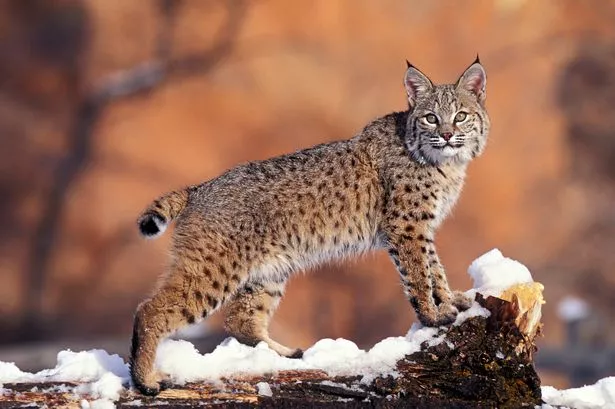The Scottish Highlands, a region renowned for its rugged beauty and diverse wildlife, is facing a unique challenge: the presence of two Eurasian lynx, suspected to have been illegally released into the wild. Authorities are urging the public to exercise extreme caution and refrain from approaching the animals, emphasizing the potential dangers associated with interacting with wild predators. Lynx, though naturally elusive, can pose a threat to humans, particularly if they feel cornered or threatened. Furthermore, the unexpected introduction of these apex predators into the delicate ecosystem of the Highlands raises concerns about the potential impact on the existing wildlife and the overall balance of the region’s biodiversity. The situation underscores the complex interplay between human actions and the natural world, highlighting the importance of responsible wildlife management and the potential consequences of illegal releases.
The primary concern regarding the escaped lynx revolves around public safety. While lynx are not typically aggressive towards humans, they are powerful predators equipped with sharp claws and teeth. Any interaction, whether intentional or accidental, could result in serious injury. Furthermore, the lynx, being unfamiliar with the specific environment of the Highlands and potentially stressed by their sudden freedom, may exhibit unpredictable behavior. This unpredictability increases the risk of encounters turning confrontational, particularly if people attempt to approach or interact with the animals. The authorities are working to locate and recapture the lynx to ensure both the safety of the public and the well-being of the animals themselves.
The illegal release of the lynx also raises significant ecological concerns. The introduction of a non-native or relocated predator can disrupt the delicate balance of an established ecosystem. The lynx, being apex predators, could impact the populations of existing prey species, potentially leading to declines in certain animal populations and altering the dynamics of the food web. Furthermore, the presence of the lynx could introduce competition with other native predators, such as wildcats and foxes, further complicating the ecological balance. The long-term ramifications of this introduction are uncertain, but the potential for significant ecological disruption necessitates careful monitoring and management.
The investigation into the release of the lynx is ongoing, with authorities actively seeking information from the public. Illegal wildlife releases are a serious offense, carrying significant penalties. These releases not only endanger public safety and disrupt ecosystems but also undermine conservation efforts and threaten the delicate balance of biodiversity. Understanding the motivations behind such releases is crucial for developing preventative measures and addressing the underlying issues that contribute to illegal wildlife trade and activity.
The situation in the Scottish Highlands serves as a stark reminder of the importance of responsible wildlife management and the potential consequences of human interference in natural ecosystems. The illegal release of the lynx underscores the need for greater public awareness about the potential impacts of such actions and the importance of reporting suspicious activities to the relevant authorities. Effective conservation requires a collaborative effort between government agencies, conservation organizations, and the public, working together to protect biodiversity and ensure the long-term health of our ecosystems.
The current focus remains on locating and safely capturing the escaped lynx to mitigate the immediate risks to public safety and minimize the potential for ecological disruption. The subsequent steps will likely involve a thorough assessment of the situation, including the potential impacts on the local ecosystem and the development of strategies to prevent similar incidents in the future. This incident highlights the complex challenges associated with managing wildlife in a rapidly changing world, emphasizing the need for proactive measures, informed decision-making, and a continued commitment to protecting our natural heritage. It also underscores the critical role that the public plays in reporting suspicious activity and supporting the efforts of those working to protect our wildlife and maintain the ecological integrity of our shared environment.














